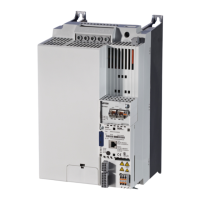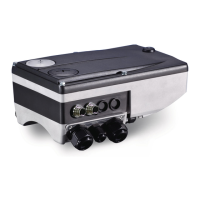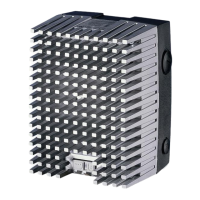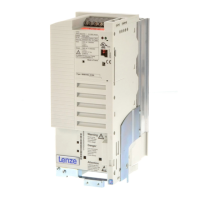Technical description 81 00_ A
53
7.6.21
ACCELERATlON TIME FOR SET-VALUE 2 C220
DECELERATION TIME FOR SET-VALUE 2 C221
Theacceleration and deceleration times for reference 2 (see 7.1.6) is set separately
using C220, C221.
TheTitimes refer to fdmax and can be calculated as described under 7.2.2.
7.6.22
LOAD CHANGE ATTENUATlON C 234
When operating with changing loads, where energy is repeatedly fed back into the
DCbus of the inverter (e.g. with eccentric loads), the rise of the DC bus voltage is
limited.The fed back energy is reduced so that the use of a brake chopper may not
be necessary. The suppression of the load change oscillations is set using C234.
7.6.23 FREQUENCY PILOT CONTROL C 238
Forclosed-Ioopcontrol, it is useful to keep the influenceof the PI-controllerlow. In
suchapplications,the output frequency can be pilot-controlledwith the total set-
value. (C238 = -1-). In this way the deviation in open-Ioop control is already very
low and can be compensated by the PI-controller. The greater the system deviation,
the higher the influence of the PI-controller (C074) must be set. This results in Ionger
response times.
Withclosed-Ioop control it may be necessary for the influence to be up to 100%. In
such cases, pilot control is generally not required
(C238 = -0-).
Pilotcontrol of the output frequency using the actual value (C238 = -2-) can be
used in the case of particularly highly dynamic drive requirements, e.g. for the
positioning of traversing drives. The output frequency is then pilot-controlled in line
with the speed and the PI-controller generates the necessary slip to attain the set-
value. Therefore the drive remains stable even with extremely short set-value
changes.
7.6.24
Frequency setting range
C 239
If working withclosed-Ioopcontrolled configurationsor with a second set-value in
open-Ioop operation, it is conceivable that situations may arise in which the direction
of motor rotation reverses. In pratice, this may not be desired. With code
C239 = -1-, you can ensure that the drive is not able to reverse its direction of
rotation.
Lenze

